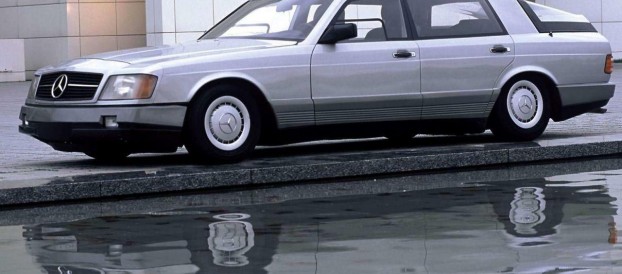

1981 Mercedes-Benz Auto2000
very low drag coefficient of Cd = 0.28
The petrol engine was derived from a 3.8 L standard V8 modified with automatic cylinder shut-off that temporarily shut down four chambers, resulting in the fuel consumption figure for the Euromix driving cycle being reduced to just 9.3 liters per 100 kilometers.
T diesel version had a 3.3-litre six-cylinder diesel engine with twin turbochargers, and managed a fuel consumption of 7.5 liters per 100 kilometers at a speed of 120 kmh
the third version that was the most pioneering: a gas-turbine engine which brought several benefits, including low-pollutant combustion, low weight, compact dimensions, favorable torque characteristics and the elimination of water cooling.
The concept was still considered novel when it was used in the Jaguar C-X75 of 2010 – a testament to how forward-thinking the early-1980s Mercedes engineering department was.







